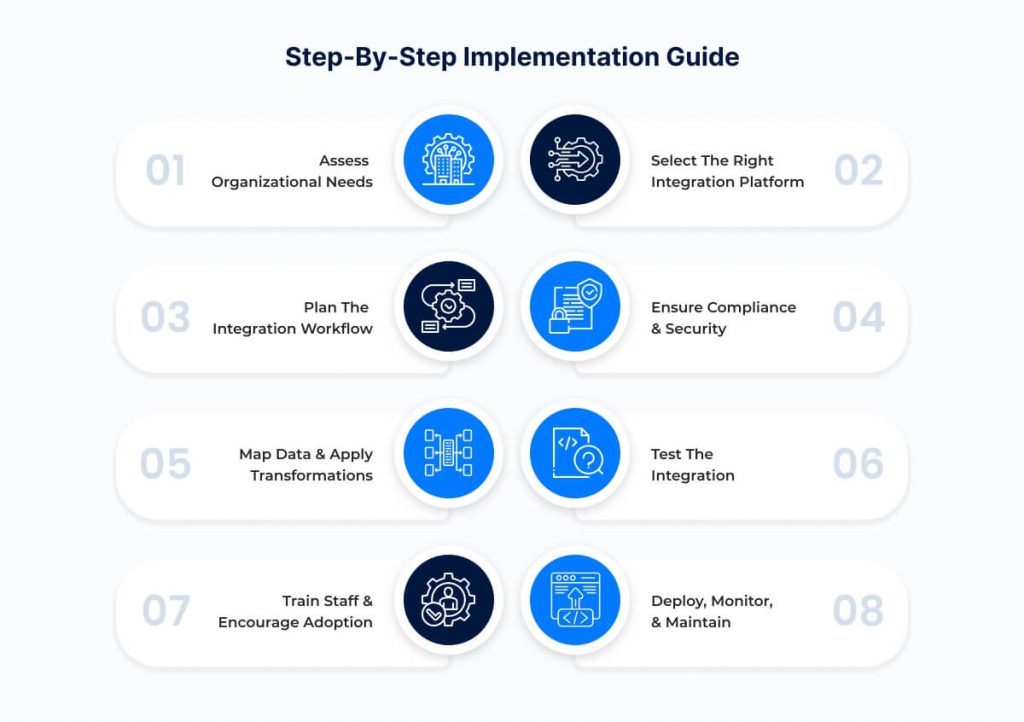Virtual Medical Assistants are digital tools powered by artificial intelligence and automation. They work like human office staff but can work remotely or with on-site teams. In physical therapy, VMAs can handle tasks like appointment booking, rescheduling, cancellations, reminders, gathering patient information, communication, and billing support.
Physical therapy clinics in the US can use healthcare Business Process Outsourcing (BPO) services to let VMAs handle these tasks. This lets the clinic staff focus more on patient care and clinical work. This helps the clinics work better, improve patient experience, and get better results. Anna Lee Mijares, a healthcare writer and nurse, said that virtual medical assistants make administrative work easier, improve communication with patients, and help with home-based rehabilitation.
Scheduling Optimization Through Virtual Medical Assistants
Managing appointments well is a main job for VMAs. Physical therapy clinics often have trouble with last-minute cancellations, no-shows, and booking conflicts. These problems waste resources and mess up the workflow. VMAs help by giving automated appointment scheduling with software systems.
- Automated Booking and Rescheduling: VMAs let patients book or change appointments online any time through websites or apps. This makes the front-desk work lighter and makes it easier for patients to remember or make appointments.
- Reducing No-Shows with Automated Reminders: No-shows cost clinics money and slow progress. VMAs send automatic reminders by text, email, or calls before appointments. This can reduce no-shows by up to 30%. The HIPAA-compliant platform DocVilla found that automatic reminders help fill gaps and use therapy rooms and clinicians better.
- Cancellation and Wait-List Management: When patients cancel or move appointments, VMAs tell the staff and update calendars automatically. They also manage wait-lists to fill open spots fast. This helps keep the clinic running smoothly.
Good scheduling lets US physical therapy clinics handle shifts in patient numbers due to season or local health issues. Staffingly, Inc. calls VMAs “game-changers” because they manage appointment slots without getting tired, making scheduling more efficient and patient flow smoother.
AI Call Assistant Manages On-Call Schedules
SimboConnect replaces spreadsheets with drag-and-drop calendars and AI alerts.
Enhancing Patient Management Through VMAs
VMAs also help with managing patients through their physical therapy treatment.
- Patient Data Collection and Verification: Before appointments, VMAs safely gather and check important patient info like medical history, insurance, and consent forms. This gets full documents to clinicians early, making the check-in faster and avoiding delays.
- Patient Communication and Education: VMAs keep talking with patients by giving clear instructions about home exercises, injury prevention, and treatment goals. Automated follow-ups keep patients involved and help them stick to therapy.
- Supporting Home-Based Rehabilitation: Physical therapy often includes home exercises and remote checks. VMAs track if patients follow exercises, collect progress updates, and send this info to therapists. This helps therapists change treatment when needed and keeps patients motivated.
- Data-Driven Personalization: VMAs collect data on exercises, symptoms, and appointments. Therapists get real-time info so they can adjust treatment plans quickly and properly.
By improving education and communication, VMAs help lower problems and setbacks during rehab. They support better teamwork between patients and clinicians. The ongoing communication with VMAs fits well with patient-focused care plans in current physical therapy guidelines.
Impact of VMAs on Reducing Wait Times and Increasing Clinic Efficiency
Long waits make both patients and staff unhappy. Delays usually come from scheduling issues, lots of paperwork, and poor planning. Virtual Medical Assistants help fix these by making clinic tasks simpler.
- Minimizing Scheduling Delays: VMAs handle bookings and cancellations in real time, cutting gaps caused by last-minute changes. They manage remote scheduling and reminders to keep patients moving, reduce crowding in waiting rooms, and keep clinicians busy.
- Reducing Administrative Workloads: VMAs automate insurance checks, billing follow-ups, and authorization work through EMR systems. This lowers the pressure on front desk staff. Staffingly, Inc. says outsourcing with VMAs cuts mistakes and speeds up processing, which means shorter waits and fewer treatment delays.
- Supporting Telemedicine and Remote Sessions: Physical therapy is using telehealth more. VMAs set up virtual appointments, send reminders for online sessions, and help patients with technical problems. This lowers the need for in-person visits and frees clinic space for patients who need hands-on care.
Digital assistants also speed up getting new doctors ready, enabling clinics to add staff and manage patients better. All these improvements help US physical therapy clinics give timely care to patients.
AI and Workflow Automation Integration in Physical Therapy Practices
Artificial intelligence (AI) makes Virtual Medical Assistants even smarter by adding automation and analysis to healthcare work. Clinics that use AI-powered VMAs gain several benefits.
- Automated Decision Support: AI in VMAs looks at patient data patterns and warns clinicians if changes in therapy are needed. For example, if a patient’s symptoms get worse or they skip home exercises, the VMA can alert the therapist early.
- Speech Recognition and Smart Documentation: VMAs with voice recognition help clinicians write notes more quickly and make fewer mistakes. They use smart templates to keep records consistent, accurate, and compliant with rules.
- Predictive Analytics for Scheduling and Resource Allocation: AI studies past data and patient trends to forecast busy times and assign staff smartly. This helps clinics handle busy seasons without too many overtime hours or unused resources.
- Secure Remote EMR Access: VMAs can access Electronic Medical Records remotely to update files, check insurance, and handle billing. Features like multi-factor authentication and encryption keep patient data safe.
- Automated Patient Communication: AI powers automatic reminders, follow-ups, and educational messages that fit each patient’s needs. Customizing how and when to send messages helps keep patients engaged without bothering them.
The mix of AI and automation in VMAs helps humans and modernizes clinic administration. Dr. Karen Bennett says, “Virtual assistant services streamline the billing process and save valuable time,” showing how these tools help in real ways.
Automate Medical Records Requests using Voice AI Agent
SimboConnect AI Phone Agent takes medical records requests from patients instantly.
Benefits Specific to US Physical Therapy Practices Using VMAs
Using Virtual Medical Assistants in US physical therapy brings some key benefits based on local healthcare rules and conditions:
- Compliance with HIPAA Standards: VMAs working with US BPO providers follow strict HIPAA rules. They use encryption and secure communication to protect patient information.
- Reducing Staff Burnout and Turnover: VMAs take away repetitive office work from physical therapy staff. This lowers job stress and reduces the chance of staff leaving their jobs, which is a big problem in US healthcare.
- Increasing Revenue Cycle Efficiency: When VMAs work with billing systems, they cut down denied insurance claims caused by errors. Reports say 63% of denied claims can be fixed through proper follow-up done by VMAs, helping clinic finances.
- Adapting to Patient Expectations: US patients want easy digital solutions like online scheduling, automatic reminders, and easy ways to communicate. VMAs provide these features, which improves patient happiness and helps clinics stay competitive.
- Supporting Telehealth Expansion: Telemedicine grew in the US after COVID-19. VMAs help manage virtual visits and follow-up care, making physical therapy more accessible.
Companies like Unity Communications and Staffingly, Inc. promote VMAs that bring affordable scaling, smoother operations, and better patient experiences to US physical therapy clinics.
HIPAA-Compliant Voice AI Agents
SimboConnect AI Phone Agent encrypts every call end-to-end – zero compliance worries.
Recommended Best Practices for Implementing VMAs in Physical Therapy
To get the most from Virtual Medical Assistants, US physical therapy clinics should consider these steps:
- Choose vendors that are HIPAA-compliant and keep IT security strong with encryption and multi-factor authentication.
- Make sure VMAs fully connect with EMR and scheduling systems for smooth data sharing and fewer manual errors.
- Customize patient communications to their preferred ways and timing. This improves engagement and lowers appointment cancellations.
- Train both staff and patients on how to use the digital tools. This helps everyone use the VMA systems well.
- Watch performance measures like no-show rates, patient satisfaction, appointment fills, and billing accuracy. Adjust workflows based on these results.
- Use data from VMAs to keep improving care plans, assign staff, and predict patient needs.
Following these tips helps physical therapy clinics use VMAs well, improving operations and keeping care quality high.
Final Thoughts
Virtual Medical Assistants help US physical therapy clinics fix many key problems. They automate appointment scheduling, lower no-show rates with reminders, improve patient communication and education, and use AI to analyze data. This simplifies clinic work and helps patients get better care.
VMAs also support home-based rehabilitation and make billing work easier. Clinic leaders and IT managers wanting better efficiency, patient happiness, and finances should think about using VMAs. The move to digital tools fits well with physical therapy clinics planning for steady growth and improved care in the future.
Frequently Asked Questions
What role do Virtual Medical Assistants (VMAs) play in physical therapy clinics?
VMAs assist by streamlining administrative tasks such as appointment scheduling, patient communication, and documentation. They allow internal staff to focus more on direct patient care, improving operational efficiency and patient satisfaction.
How do VMAs improve scheduling and patient management in physical therapy?
VMAs use scheduling software to automate bookings, handle cancellations, send automated reminders, verify patient information before visits, and schedule follow-ups, thus reducing no-show rates and optimizing clinic resources.
In what ways do VMAs boost patient communication and education?
VMAs provide detailed exercise instructions, educate patients on injury prevention, explain therapy goals, send follow-up messages to track progress, and issue reminders to ensure adherence to treatment plans.
How do VMAs support home-based physical therapy rehabilitation?
VMAs facilitate remote monitoring by tracking patient exercise adherence, compiling progress reports for therapists, offering ongoing encouragement, and enabling timely adjustments to treatment plans based on real-time data.
What benefits does outsourcing administrative tasks to VMAs provide physical therapy clinics?
Outsourcing administrative duties to VMAs reduces wait times, increases patient flow, enhances resource management, and allows clinical staff to focus fully on patient care, resulting in improved service quality and patient outcomes.
How do VMAs use data analytics to improve physical therapy treatment outcomes?
VMAs collect and analyze patient data on exercise performance, symptom changes, and adherence, presenting insights to therapists to customize treatment plans and make real-time therapy adjustments for optimized outcomes.
What is Business Process Outsourcing (BPO) in the context of healthcare and physical therapy?
BPO is delegating non-core administrative and support functions to external experts, like VMAs, enabling healthcare providers to improve efficiency and concentrate on core clinical activities.
Why is patient education important in physical therapy, and how do VMAs enhance it?
Patient education ensures understanding of treatment plans and fosters adherence. VMAs enhance it by providing clear instructions, explaining outcomes, advising lifestyle changes, and maintaining continuous engagement through follow-ups.
How do VMAs contribute to improving patient adherence to physical therapy regimens?
VMAs send exercise and appointment reminders, provide motivation and support through regular communication, and respond to patient questions, which helps maintain consistent participation in therapy programs.
What are the overall advantages of integrating VMAs into physical therapy practices?
Integrating VMAs modernizes clinic operations by automating administrative tasks, improving patient communication and education, supporting home-based care through remote monitoring, and enhancing data-driven treatment personalization, leading to better service delivery and patient outcomes.
The post Leveraging Virtual Medical Assistants for Optimized Scheduling, Patient Management, and Reduction of No-Show Rates in Physical Therapy first appeared on Simbo AI – Blogs.






